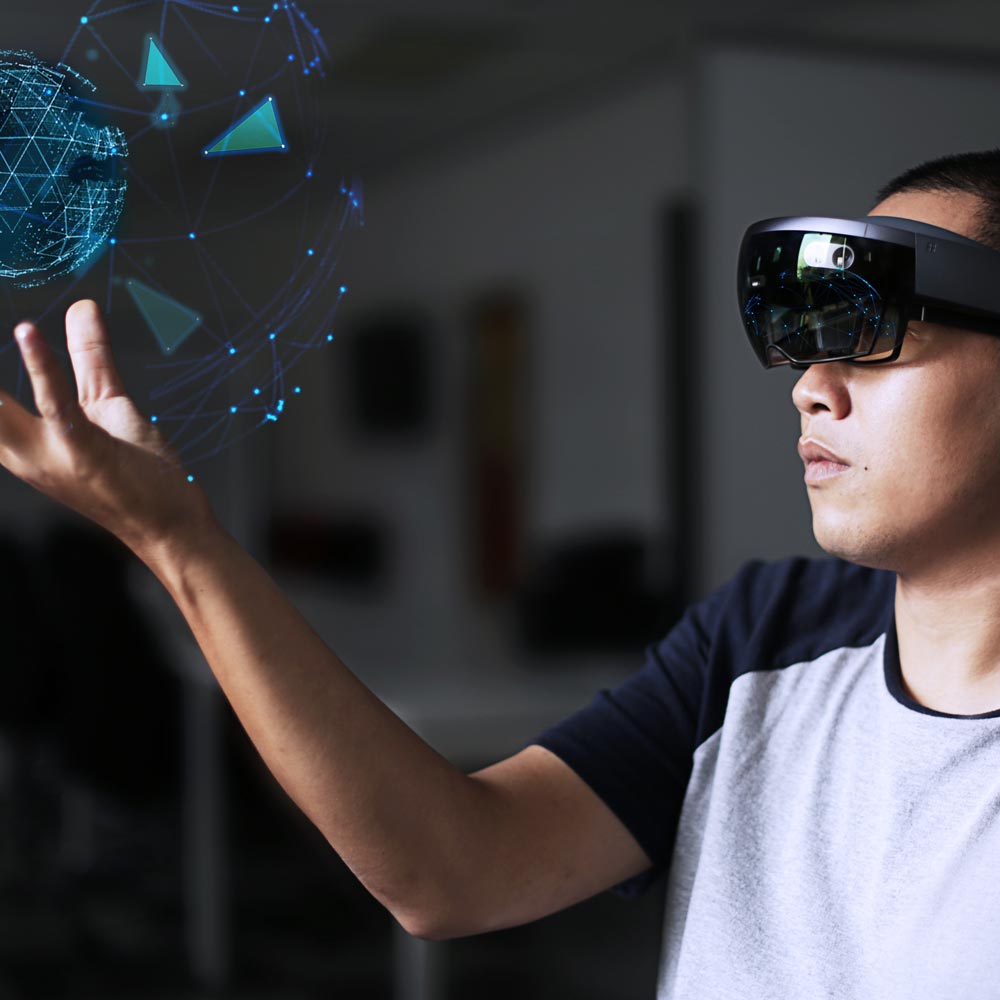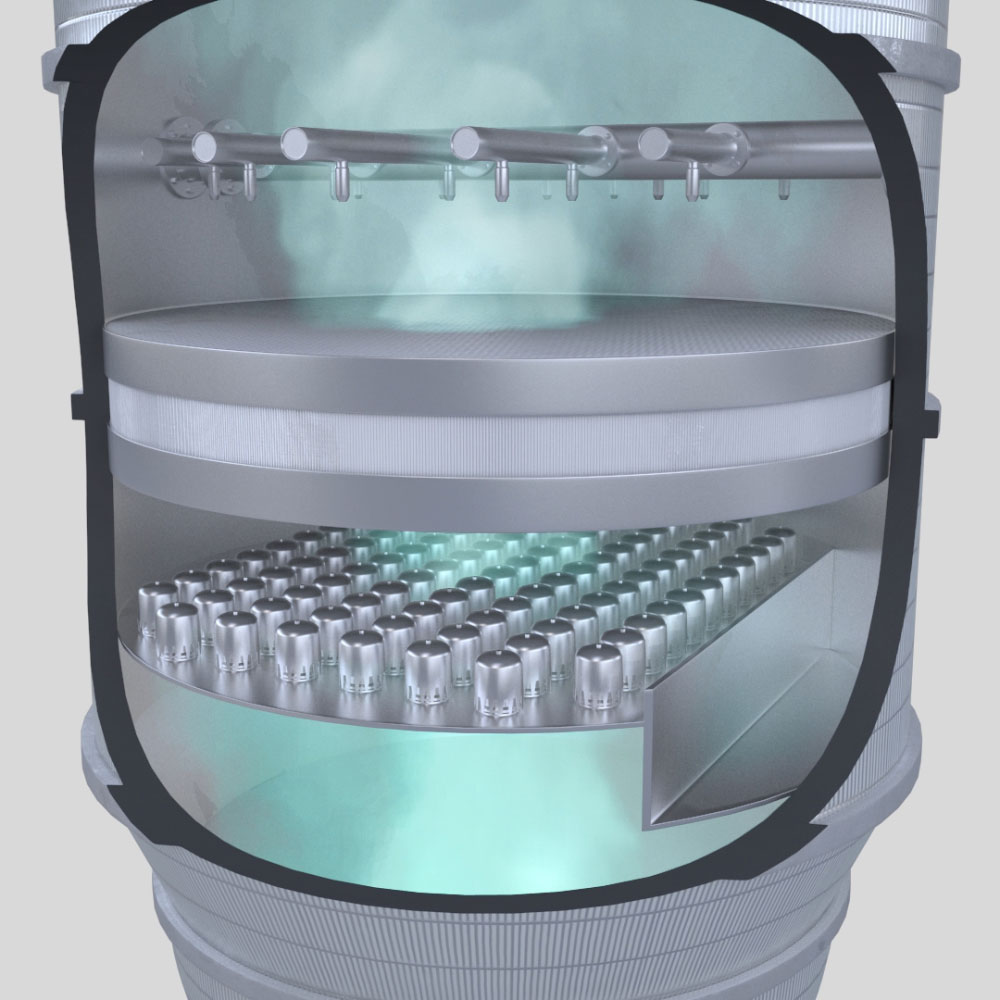what we use
our technologies
To create products and services that allow our clients’ operational processes to reach the excellence we take advantage of a wide variety of advanced technologies. Our competences includes the wide spectrum of Extended Reality, from Virtual Reality to Augmented Reality, from Projected reality to Assisted Reality. A set of complementary technologies such as Artificial Vision, Internet of Things and Enhanced Intelligence are used to combine, integrate and optimize operational efficiency and technical compatibility.

Virtual reality
3D Virtual reality (VR) is an experience taking place within a computer generated reality of immersive environments can be similar to or completely different from the real world. Applications of virtual reality can include entertainment (i.e. gaming) and educational purposes (i.e. medical or military training). VR allows to create a virtual three-dimensional photo-realistic copy of a real environment, such as buildings, industrial plants or equipment. Users can execute in real time all the actions that they can perform in the real world, simulating the functioning of different equipment and processes.

Augmented reality
Augmented reality (AR) is an interactive experience of a real-world environment where the objects that reside in the real-world are enhanced by computer-generated perceptual information, sometimes across multiple sensory modalities, including visual, auditory, haptic, somatosensory, and olfactory. The overlaid sensory information can be constructive (i.e. additive to the natural environment) or destructive (i.e. masking of the natural environment) and is seamlessly interwoven with the physical world such that it is perceived as an immersive aspect of the real environment.

Projected reality
Projected reality renders virtual objects directly within or on the user’s physical space. A key benefit of PR is that the user does not need to wear a head-mounted display. Instead, with the use of spatial displays, wide field of view and possibly high-resolution images of virtual objects can be integrated directly into the environment. For example, the virtual objects can be realized by using digital light projectors to paint 2D/3D imagery onto real surfaces, or by using built-in flat panel displays. The projection technology can turn any space into a type of interactive display, by projecting images on different surface and objects.

Assisted reality
Our “3D Assisted Reality” (ASR) solution enables the delivery of real time remote support to Field Operators for interventions and operations through voice and video call features.
The Remote Center supports Field Operators delivering them information on which tasks and activities have to be executed and completed.
Operators receive and visualize instructions directly on dedicated devices (wearables) and can execute tasks and operations more effectively and efficiently.

Digital asset management
Businesses need to keep up to date with the growing digital tools to stay competitive.
With this in mind, 3D digital assets management are a fundamental element to stay ahead.
Starting from CAD files we retropologize the assets in order to generate low poly 3D models according to the constraints of real time applications.

Simulation engine
The rise of the 4.0 technologies enables the development of simulation models that can allow predictive analysis of the behaviour of systems, machines and plants. The evolution of simulation engines systems integrates artificial intelligence and advanced analytics techniques to reflect the physical world in a virtual model in order to provide preventive and optimized solutions. Our Simulation Engines solutions are broadly applied within the automobile, aviation and naval industry, with a great impact on engineering processes.

Enhanced intelligence
VR and AR can be partnered with different forms of advanced technologies, such as robotics, natural language processing, and machine learning. The result is the creation of a complex system of enhanced intelligence technologies in which the participants become part of a virtual ecosystem and can interact with it. Enhanced intelligence can enrich decision making, reinventing business models and ecosystems, and provide customers a whole new experience.

Artificial vision
Artificial vision is aimed to the interpretation of an acquired image, through complex processing iterations that analyze, elaborate and eventually understand digital images. The system extract high-dimensional data from the real world in order to drive information and enable computers to perform the same kind of tasks humans do and with the same efficiency. The goal is not only to see, but also process and provide useful results based on the observation. It is closely linked with artificial intelligence, as the computer must interpret what it sees, and then perform appropriate analysis to act accordingly.

Internet of things
Internet of Things enables the collection and interconnection of data with analytical tools and with physical and industrial equipment.
In industrial sector, the IoT becomes the Industrial Internet of Things (IIoT) and it focuses on the optimization of operational efficiency and moving towards new ways of servicing customers with the goal of industrial transformation. IIoT is the leading driver or Industry 4.0.
